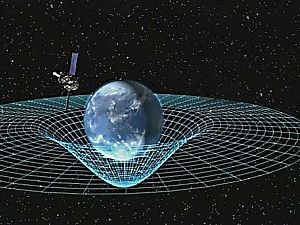Gravity – The Mysterious Force of Nature
Gravity is one of the most fundamental and mysterious forces in the universe. It is the invisible force that pulls objects toward each other, keeps planets in orbit, and gives weight to everything around us. Without gravity, life as we know it would not exist. From the movement of celestial bodies to the simple act of walking on Earth, gravity governs nearly every aspect of our physical world. Despite being one of the most well-studied forces, it still holds many unanswered questions that continue to intrigue scientists.

Discovery of Gravity
The concept of gravity has been observed for centuries, but it was Sir Isaac Newton who first formulated a scientific explanation. The famous story of an apple falling from a tree inspired him to think about why objects always fall straight down. In 1687, Newton introduced the Law of Universal Gravitation, which states:
“Every object in the universe attracts every other object with a force that is proportional to their masses and inversely proportional to the square of the distance between them.”
This law explained how the same force that pulls an apple to the ground also keeps the Moon in orbit around the Earth and the planets around the Sun. Newton’s discoveries revolutionized physics and helped shape our understanding of the cosmos.
Einstein’s Theory of Gravity
While Newton’s law of gravity was highly successful, it did not explain everything. In the early 20th century, Albert Einstein introduced the General Theory of Relativity, which provided a deeper understanding of gravity.
Einstein proposed that gravity is not just a force but a result of the curvature of space-time caused by massive objects. Imagine placing a heavy ball on a stretched rubber sheet; the ball creates a dip, and smaller objects around it roll toward the ball. Similarly, massive celestial bodies like planets and stars bend space-time, and other objects move along these curves, which we perceive as gravitational attraction.
Einstein’s theory was confirmed through various experiments, including the observation of gravitational lensing, where light bends around massive objects, such as black holes. His work changed the way we view gravity and opened doors to modern astrophysics.
The Role of Gravity in the Universe
Gravity plays a crucial role in shaping the universe. Some of its most important functions include:
1. Keeping Celestial Bodies in Orbit
Gravity keeps the planets revolving around the Sun in a predictable manner. Without it, planets would drift off into space. Similarly, moons remain in orbit around their planets due to gravitational forces.
2. Formation of Stars and Galaxies
Gravity is responsible for the formation of stars. Clouds of gas and dust in space collapse under their own gravitational pull, leading to the birth of new stars. Over billions of years, gravity has also helped shape galaxies, clusters, and even the large-scale structure of the universe.
3. Gravitational Time Dilation
One of the most fascinating effects of gravity is time dilation. Einstein’s theory suggests that time moves slower in stronger gravitational fields. This phenomenon has been observed in experiments involving atomic clocks placed at different altitudes on Earth. The closer you are to a strong gravitational source, the slower time moves relative to a weaker gravitational field.
4. Influence on Tides
Gravity also affects Earth’s oceans. The gravitational pull of the Moon and the Sun creates tides, causing the rise and fall of sea levels. These tidal forces play an important role in marine ecosystems and even in Earth’s rotation over long periods.
Gravity in Space Exploration
Scientists and engineers use gravity in various ways for space exploration. One of the most important techniques is gravity assist or the slingshot effect. This method allows spacecraft to gain speed by using the gravitational pull of a planet or a moon.
For example, NASA’s Voyager 1 and 2 spacecraft used gravity assist to travel beyond our solar system. Similarly, missions to Mars, Jupiter, and Saturn have used this technique to save fuel and travel greater distances efficiently.
Mysteries and Future Studies of Gravity
Despite centuries of research, gravity still holds many unsolved mysteries:
- What is the true nature of gravity? While we understand its effects, we do not fully know what causes gravity at the most fundamental level.
- How does gravity interact with quantum mechanics? Scientists are trying to develop a theory of quantum gravity that can unify Einstein’s relativity with quantum physics.
- Is there a possibility of gravity manipulation? Some theories suggest that advanced civilizations might one day find a way to control or even counteract gravity, leading to revolutionary changes in space travel.
Modern research, including experiments at the Large Hadron Collider (LHC) and space observatories like LIGO, aims to unlock these secrets.
Conclusion
Gravity is one of the most essential forces in the universe, shaping everything from the smallest particles to the largest galaxies. It keeps us grounded, allows planets and stars to form, and influences the very fabric of space and time. While Newton and Einstein provided groundbreaking insights, there is still much to learn about this mysterious force.
As scientists continue to explore its secrets, gravity remains one of the most fascinating and fundamental aspects of our existence—one that governs the universe in ways we are only beginning to understand.


